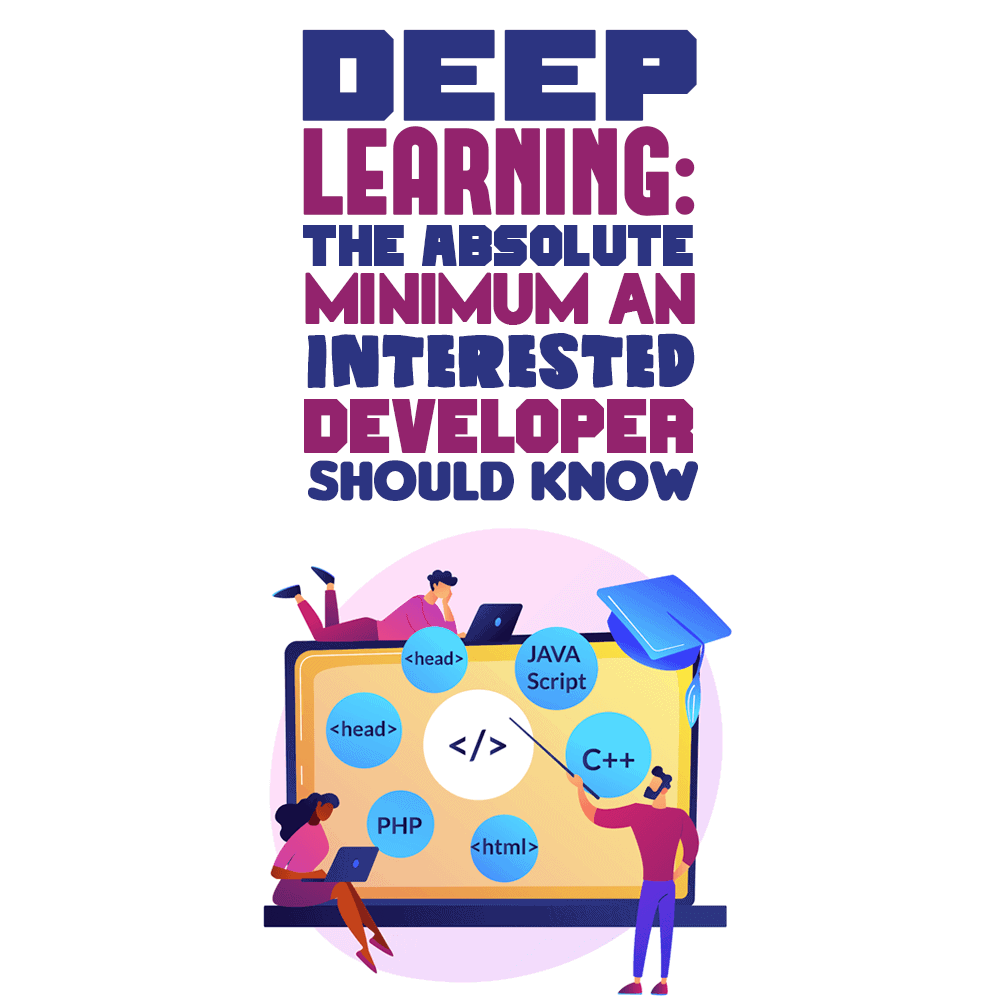 If you are a developer and have been reading articles and posts on deep learning, you must be intrigued by how the industry is progressing.
If you are a developer and have been reading articles and posts on deep learning, you must be intrigued by how the industry is progressing.
For those of you who haven’t heard, deep learning is a machine learning (ML) technique that teaches systems to perform tasks that come naturally to humans. It is the key technology behind the voice control options in hands-free speakers, TVs, tablets, and smartphones, and it is key to developing driverless cars.
For a developer looking to switch fields or niche, deep learning brings in a lot of opportunities. However, how to get started is still a big question if you want to make a mark in the industry.
In this post, you will learn about the rapid growth of deep learning, why the traditional approach to teaching deep learning will not work for you, and how you can really get started as an interested developer
How has Deep Learning Attained Impressive Results in Such a Short Time Span?
The shortest answer to this question is ‘accuracy.’ Deep learning executes recognition accuracy at higher levels, helping consumer electronics meet user expectations. Accuracy is essential for safety-critical use cases like driverless automobiles.
With constant technological advancements, deep learning has improved to the point that it is outperforming humans in tasks like categorizing objects in images.
This is what makes it a hot topic among developers. However, its application is quite difficult because it doesn’t include your standard coding. It includes data as well. So, you will be circling between large amounts of labeled data and substantial computing power.
Deep learning applications are changing the course of how we perform certain tasks—from automated driving to medical devices, aerospace and research, and more.
Traditional Answer to “How to Get Started in Deep Learning?”
Most developers looking to explore the deep learning niche leave it halfway because it starts with definition and transits to concepts of algorithms and mathematical descriptions, which only increase complexity.
While mathematical descriptions, concepts of algorithms, and definitions are concise, clear, and often straightforward, they are dull, dry, and require a prerequisite mathematical background to parse and interpret.
This is the primary reason why you only get to study machine learning and its stages as a graduate-level subject in colleges and universities. It is because the topic only requires you to have the basic principles cleared. With that said, to start a career in deep learning as a developer, it is advisable that you have a good understanding of:
- Calculus
- Multivariate Statistics
- Linear Algebra
- Probability
- Statistics
It can get a little worse when you explore exotic algorithms because their approach to deep learning is pervasive.
YouTube videos and online courses follow the university approach to teaching deep learning. Since it is related to data science, you have a better opportunity to find what you need at platforms like SDSclub. It can help you learn more about coding with deep learning. It is a unique community designed to empower tech enthusiasts.
Traditional approaches to learning aren’t going to benefit developers because they are rigorous. Suppose you are a developer who has picked up languages from here and there and is now learning to develop standalone applications.
You tell your teachers about it, and they advise you that you should complete your degree first in computer science before you can become a programmer. You start college and are exposed to discrete mathematics, calculus, and esoteric algebra. You realize that you are using antiquated programming languages. And slowly, your passion for developing computer applications wavers.
Maybe you made it to the other side but realize that you weren’t taught a single thing about modern coding and software development practices, tooling, languages, and other things that you can use to become a developer practicing machine learning.
So what does this mean? Would a budding developer who wants to explore deep learning be required to go to an extent where they spend a bunch of years and hundreds and thousands of dollars studying higher degrees and math?
Well, the answer is no.
What is the Better Approach?
There will be a lot to code. So, the better approach is to understand the changing industry needs and shape yourself accordingly.
According to GitHub, an online code repository, there are about 10 extremely popular programming languages that are used in machine and deep learning. They include:
- Python
- C++
- JavaScript
- Java
- C#
- Julia
- R
- Shell
- TypeScript
- Scala

It is not that you should master all the languages. If you know Python, you can work on developing your skills in programming Python codes. It would be better if you try your hands at one more language that goes hand-in-hand with Python.
Once you know the right programming languages and tooling, you can easily blast a problem with deep learning codes and algorithms. However, you will need to form a systematic process for repeatable results, like:
- A process that is constant to the specific tools, fad algorithms, and programming languages. It takes no time for a tool to get outdated, but the process you use must be adaptive.
- Work on developing a process that assures ‘positive’ results.
- The process you choose must be ‘step-by-step’ so that you and the whole team working with you know what is next. Your team would not want to completely rely on you for codes. And not knowing what the next step is is a project killer.
- You need a process that allows you to see it from a problem specification and guide you from end-to-end.
Learn the Basics Before You Start
Deep learning is all hype these days.
As a developer, it must be tempting to explore the whole new world of programming and coding where machines are involved.
But, before you start, it is vital that you get your basics cleared, particularly in mathematics, because coding and knowledge of programming languages are not the only things it requires.
